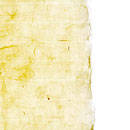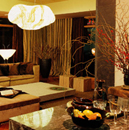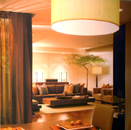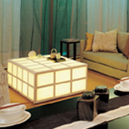
Korean White
Korean White describes the traditional practice of combining a natural white (not a bright or bleached white) with texture that often results in textured plaster walls or rice paper for windows and doors. more
Korean White | Apartment
application
Korean designers interpret traditional uses of Korean White in contemporary luxury apartments by combining several shades of white in one space and adding black as an accent.
research
Korean White is a subdued white, similar to off-white or ivory, and combined with texture such as white color pigments of plaster for walls and rice paper for windows and doors. Korean White occurs naturally and organically from a material’s properties, such as plaster, rice paper, hemp and silk whose properties.
The Meaning of White in Korean Culture. Although there are diverse explanations why Koreans have favored white throughout their long history, white’s importance to the culture cannot be denied. Koreans believe themselves to be the descendants of the bright and pure sun.1 White is related to purity and good omens. Many names of mountains in Korea contain the suffix paksan (a white mountain), because Koreans regard them as sacred, having absorbed the spirit of the sun’s rays. The Chinese history, Three Kingdoms, notes that the common Korean in Buyo, one of the historical Korean nations (B.C 238- A.D 494), wore white clothing and called themselves “white-clad folk.”2 Expressions of pure white are embedded in cultural rites, such as the custom of making white rice cakes on the hundredth day after the birth of a child and distributing them to 100 households. White noodles are eaten at weddings, as symbolic of many good things in life, including the sanctity of births and hopes for bright futures. White evokes the traditional Korean philosophy of inner beauty and originality. White also expresses the elegance that is characteristic in nature. Korean White is the opposite of artificiality.
The beauty of white in Korean arts is exemplified by Chosun white porcelain which was produced during the Chosun dynasty (1392-1910). Chosun white porcelains reflect the Confucian ideals of modesty and frugality. 3 The book of traditional Korean homes, Hanoak, describes the beauty of Chosun porcelain: when sunlight seeps through rice paper it casts warm, “milky rays on the decoration-free Chosun celadon pottery; the white color of the pottery glows subtly. With the creation of such understated art, Chosun people strove to create an atmosphere that exuded quiet and comfortable beauty.”4 There are various white colors, classified as milkish-white, snowish-white, jade-like white, and opaque greyish-white according to the quality and the chronology of white porcelain.5
Natural white materials used in traditional Korean houses expressed an imperfect beauty of natural textures and tones, rather than artificiality or perfection. Korean White represents simplistic, natural, spiritual and philosophical ideologies.
Plaster or white paper wall finishes contrast sharply with dark wood floors, accenting the textual differences between the plaster and wood. The use of white rice paper for windows also provides a stunning visual element. Various lattice patterns are laid across the window frames; rice paper is glued on the interior side of the window.6 Rice paper has various expressions according to its particles, components, density and fineness. Soft natural light filtering through white rice paper and latticework produces a rich, warm interior space.7
Korean White in Contemporary Apartments. Nostalgia for traditional and eco-friendly living insures that Korean White will remain an archetypical practice in luxury apartments for many more years. Reiterations include both traditional and new materials, and often include a white background with black elements.
Korean designers, such as Si-young Choi, are interpreting traditional Korean White in contemporary luxury apartments. For the entrance wall in the Houstory Apartment in Daejon, Korea Choi selected an off-white wall covering made of rice paper components. Small black sculptural objects adjacent to the back entry wall punctuate the wall.8 When people enter the apartment, their first impression is of a large black and white painting. However, small three-dimensional black sculptural objects on rice paper create this illusion. The surface finishes of the entry are shades of natural materials. Choi suggests another use of Korean White for the living room of the Michelan Apartment in Seoul. He installed ivory fabric panels and arranged a conversational area with a long couch and matching chairs. A potted crape-myrtle tree stands in close proximity to a Korean White wall which sets a natural and subtly patterned background. The whites from the carpet and selective lighting also highlight textural differences among materials.9
For the Parkpolis Apartment’s living room in Seoul, Bugon Kim installed an organically shaped light fixture made of layered rice paper; its light color and materiality create a sense of the fixture floating in space. The natural texture of the hand-made rice paper is emphasized by lighting; it makes irregular patterns emphasizing a finish that is not uniformly even, but random.10
Designer Ee-Wha Yu reiterated traditional lighting devices when she designed a custom-made lighting box made of white rice paper with a lattice wood frame as a tea table in the living room in a Seoul apartment. When the tea set is placed on the table, it is illuminated by the indirect lighting effect through the white rice paper.11 The space is filled with white light from the rice paper lighting table.
Using a contemporary vocabulary, modern Korean residential designers are achieving the abundance of white that pays homage to their ancestors’ spaces. White rice paper windows and filtered natural light is a borrowed visual effect from traditional houses. Lattices which frame window openings also contribute to a spatial richness.12
end notes
- 1) James Hoare and Susan Pares. Korean, An Introduction (London: Kegan Paul International, 1988), 173.
- 2) Jae-Soon Choi, et al., Hanoak: Traditional Korean Homes (Elizabeth, NJ: Hollym, 1999), 173.
- 3) Hoare and Pares. Korean, An Introduction, 143.
- 4) Jae-Soon Choi, Hanoak, 143.
- 5) Jae-yeol Kim, White Porcelain and Punch’o?ng Ware (London: Laurence King, 2003), 21.
- 6) Michael Freeman, Sian Evans and Mimi Lipton, In the Oriental Style: A Sourcebook of Decoration and Design (London: Thames and Hudson, 1990), 179-182.
- 7) Freeman, In the Oriental Style, 179-182.
- 8) Si-young Choi, “Houstory,” Interiors Korea no. 252 (Sept. 2007): 180-184.
- 9) Ji-seong Jeong, MARU Annual 1 (Seoul: CAPress, 2005), 266-269.
- 10) Hyungju Yoon, “Parkpolis,” Interiors Korea no.235 (April 2006): 138-148.
- 11) “A-project” Interiors Korea no. 240 (Sept. 2006): 144-155.
- 12) Evidence for the archetypical use and the chronological sequence of Korean White in luxury apartments was developed from the following sources: 1400 Naksunjae Estate, Changdug Palaca [1405] Seoul, Korea in Choi, Jae-Soon et al., Hanoak: Traditional Korean Homes (Elizabeth, NJ: Hollym, 1999), 196; PhotoCrd: Jai-sik Suh / 2000 Tea Room, Hyundai Benecity Apartment [2002] Sungchil Park/ Wallga Design; Pusan, Korea in Younghee Su, “Hyundai Benecity” Interiors Korea no.195 (Dec. 2002): 152-55; Master Room, Daechi Apartment [2005] Myunghee Lee/Charm Space; Seoul, Korea in Ji-seong Jeong, Interior Design 11: Apartment and House (Seoul: CA Press, 2005), 30-41; Living Room, Michelan Apartment [2005] Si-young Choi/Axis Design; Seoul, Korea in Ji-seong Jeong, MARU Annual 1 (Seoul: CAPress, 2005), 266-69; PhotoCrd.: Taeho Jung; Living Room, Parkpolis Apartment [2006] Bugon Kim, Seoul, Korea in Hyungju Yoon, “Parkpolis, Interiors Korea no.235 (Apr. 2006): 138-48; PhotoCrd: Taeho Jung; Living Room, Private Apartment [2006] Ee-Wha Yu: ITM I & A; Seoul, Korea in “A-Project,” Interiors Korea no.240 (Sep. 2006): 144-55; PhotoCrd: Taeho Jung; Foyer, Houstory Apartment [2007] Si-young Choi of Axis Design; Daejon, Korea in Si-young Choi, “Houstory,” Interiors Korea no.252 (Sep. 2007): 180-84; PhotoCrd: Ingi Jo.
bibliographic citations
1) The Interior Archetypes Research and Teaching Project, Cornell University, www.intypes.cornell.edu (accessed month & date, year).
2) Kim, Najung.“Theory Studies: Archetypical Practices of Contemporary Luxury Apartment Design.” M.A. Thesis, Cornell University, 2009, 34-43.



